This post is going to be hopefully helpful; I am writing it almost as much for my own sake as others as I try to get my head around the process of ‘building’ a new garden with a third party involved.
Recently, I received a cry for help from a client whom I had done a garden design for, my design had been carried out by a third party but she didn’t feel that it was ‘right’ and wanted me to come and take a look and ‘fix’ it.
I had previously had my landscaper put in a quote for the install of the garden but unfortunately we were too expensive and someone else got the job. That’s fine, I understand, I let them know that if there were any questions or problems about following the drawings or sourcing the plants to not hesitate to contact me. I wasn’t.
My designs are heavily plant based, some being purely plant design, therefore the plant selection is very important and native plants are chosen specifically for that site and position with the overall design being achieved when the plants are mature.
Interesting and unusual native plants can be hard to come by and difficult to source, they can also be quite seasonal in production, for whatever reason (I won’t go into that now). I research heavily when it comes to plant choice and one of the main things that is most important in that research is ‘availability’, if I know that there is a wonderful plant that I think the client will adore but which however is not available for another 6 months, I will discuss it with the client and see if they are willing to wait or else I will replace it with another choice. This is basically ‘substitution’ and a lot of the time it goes on in my head without me really acknowledging it.
Below is one image of what I encountered when I went to check out this garden. This area was supposed to have a curved garden bed, with Westringia ‘Deep Pruple’ in the rear, a Eucalyptus ‘Summer Red’ in the centre and a row of Callistemon ‘Green John’ in front.
The lawn is choking the plants, no garden edge was used so it was impossible to mow or whipper snip, this is new turf that has been laid , the garden edge was supposed to be brick. Not really to plan.
The Westringias used were not ‘Deep Purple’ and it was claimed that those callistemon in the front a ‘White Anzac’ heehee, ‘White Anzac’ is a low spreading form and these are already 1 metre tall and upright. None of the plants had labels still on them and the client had not received a plant list. It really was heart-breaking visiting this garden, for the client and me.
The image below is one of my favourites, this is a Blueberry Ash planted where an Acacia Groundcover was supposed to be, it is a narrow raised garden bed, where an 8 metre tree would have roots that would pull the wall down. And yes, there is some black mondo grass there…..don’t even get me started about how that crept its way in!
Sooooo….I turn up to the garden and basically 90% of the plants are un-labelled impostors, garden beds haven’t been built and the mulch is so thin the soil is showing through. Oh and the landscaper has been PAID.
There are several reasons that this chain of events happened but the main one was complete communication break-down, no communication at all sometimes.
Below is another example of poor plant set out and substitution, a 3 metre Callistemon shrub planted IN FRONT of a dwarf Protea.
How to avoid this scenario????
Well the first word of advice from me would be think before you go for the cheapest quote.
Make sure you get a broken down quote NOT a lump sum, you should be able to see exactly what you’re paying for on the quote, materials should be itemised with quantities and that also includes the plant quote.
Labor costs should also be broken down so you can see either a day rate or an hourly rate.
Ask questions, if something doesn’t look quite right or you want to change something, speak up! If you are the third party working to a plan, or drawings or specifications and you can’t understand them then the same applies.
In this case the plants were sourced from a large nursery and the Horticulturalist there went through the plant list and ‘substituted’ things they didn’t have, unfortunately this was 90% of the species and it was not communicated to the landscaper or the client what these substitutions were. So confusion all round. Below is an image of the plants after being pulled out back in their pots ready for an un-certain future…..black mondo included.
When I plant out a new garden, I do a ‘plant set out’, placing all the plants in their pots into position for planting. This process can take anywhere from 1 to 3 hours depending on the size of the garden. I follow my drawings/plans and then move things around a bit if they don’t seem ‘right’. I charge extra for this for a reason, sometimes it is quite complicated, and I am working off my own drawings!
So I understand how it would be confusing for a third party to unload 100 or more pots and look at a piece of paper full of latin names they have never heard of and think…….bloody hell.
Plant set out with correct plants (above). Ironically, when it came time for me to order the ‘correct’ plants for this garden there were a few things that weren’t available and I myself had to substitute, this literally took me half a day to get the mix right. I wanted to have contrasting flower colour at different times of the year, the tiered garden was planted in layers and heights were important, it was also necessary to get spillover at the front to soften the wall. BUT the most important part was letting the client know I was making these changes.
Happy new Hardenbergia ‘Meema’ backed by Leucospermum ‘Carnival Red’, in the end the design got carried out and the garden will be full of flower and colour. Fixing up this job was a very big learning curve for me, a crash course in problem solving and negotiation but also about respect and largely communication.
Hopefully in another 12 months I’ll be able to post some photos of how wonderful it ended up looking despite its false start.

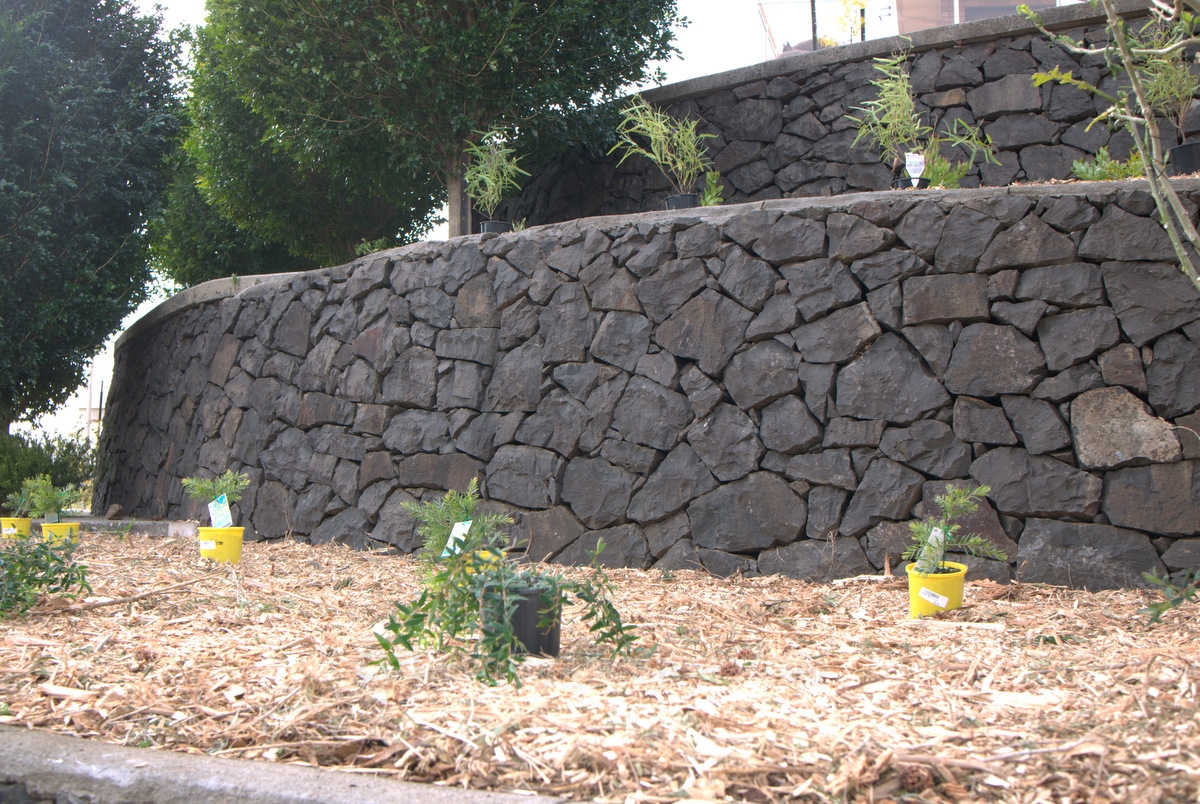
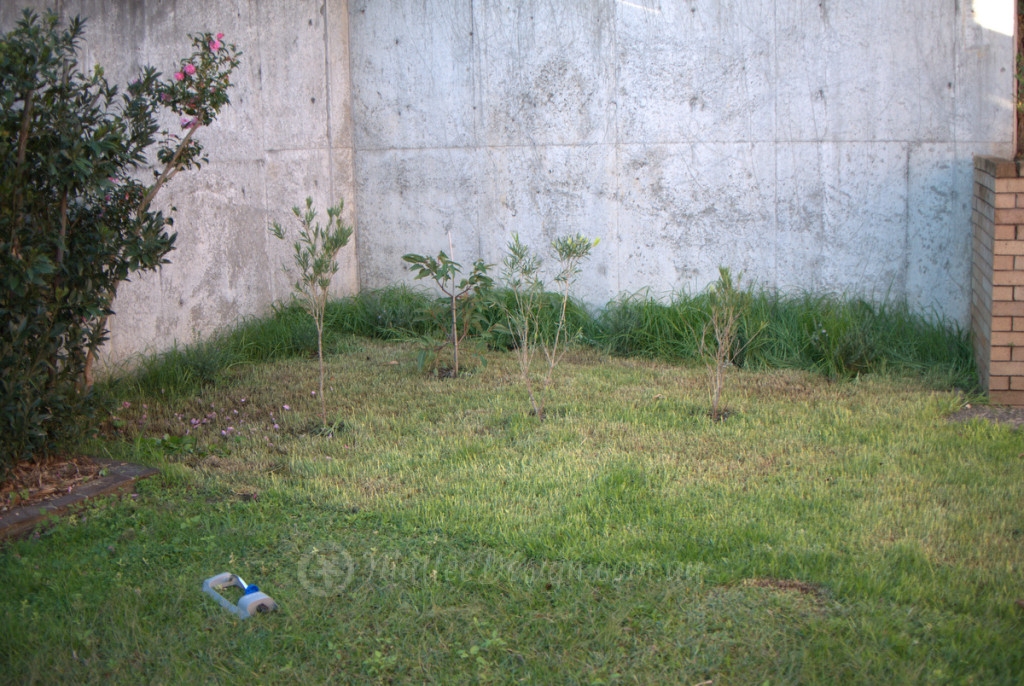
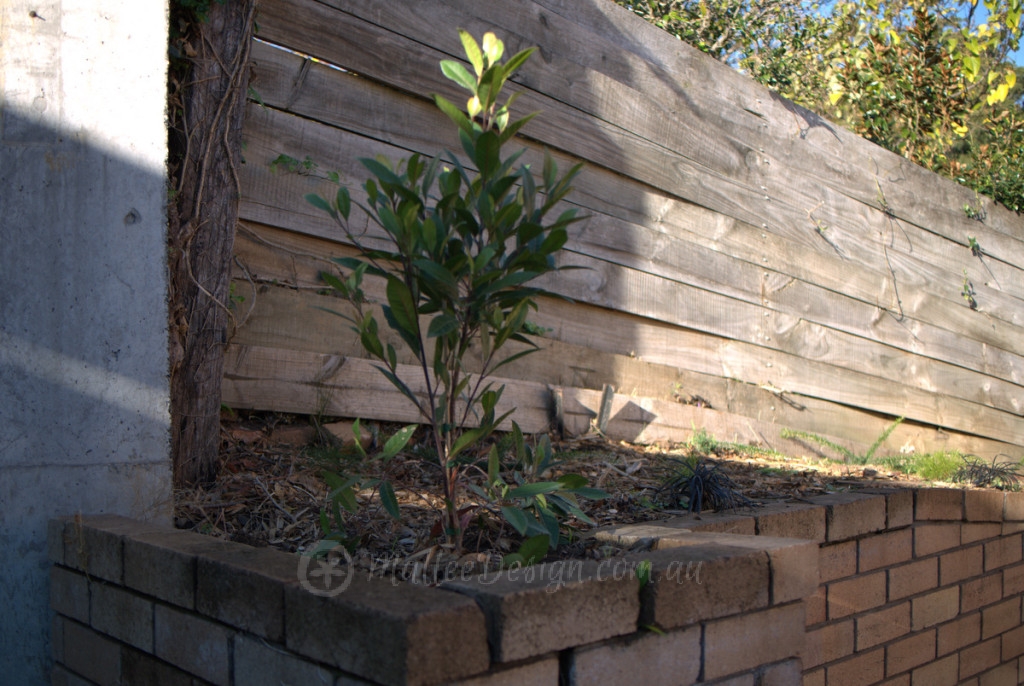
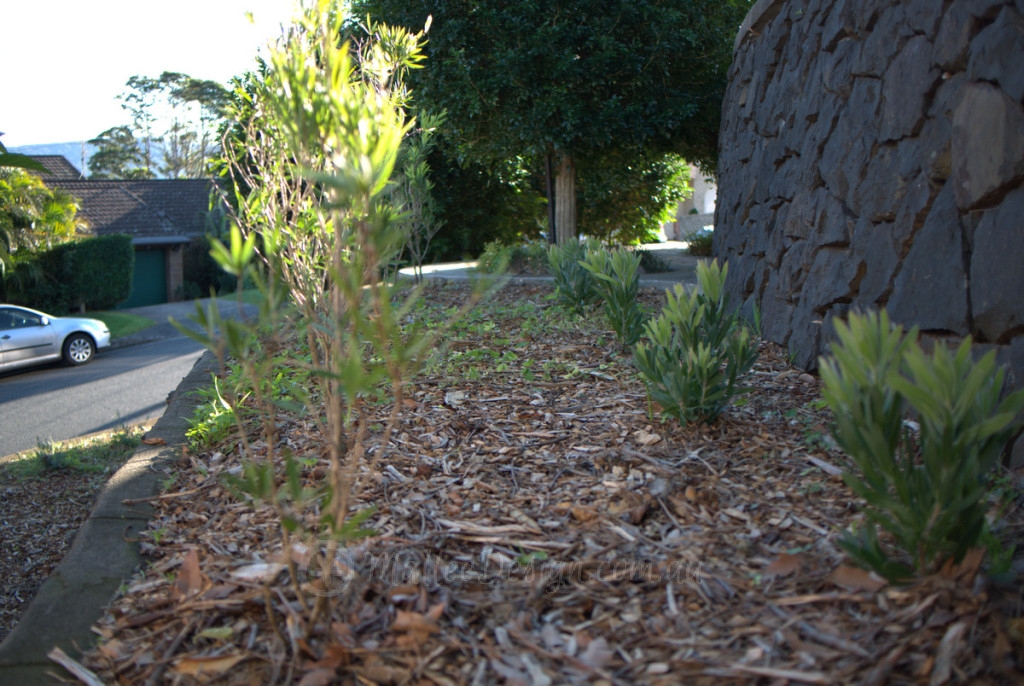
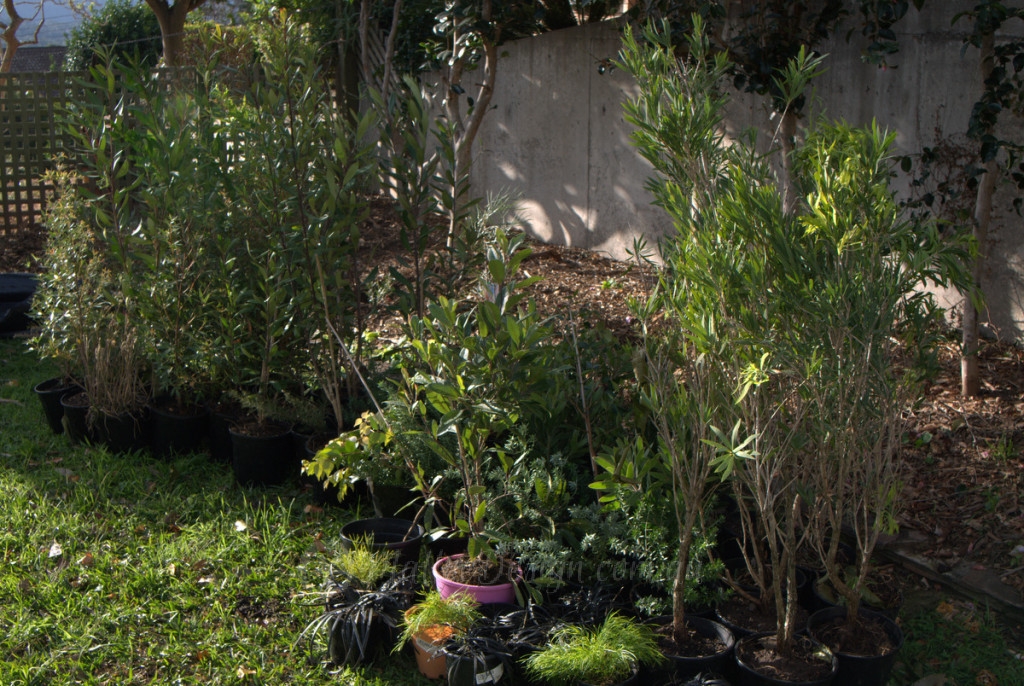
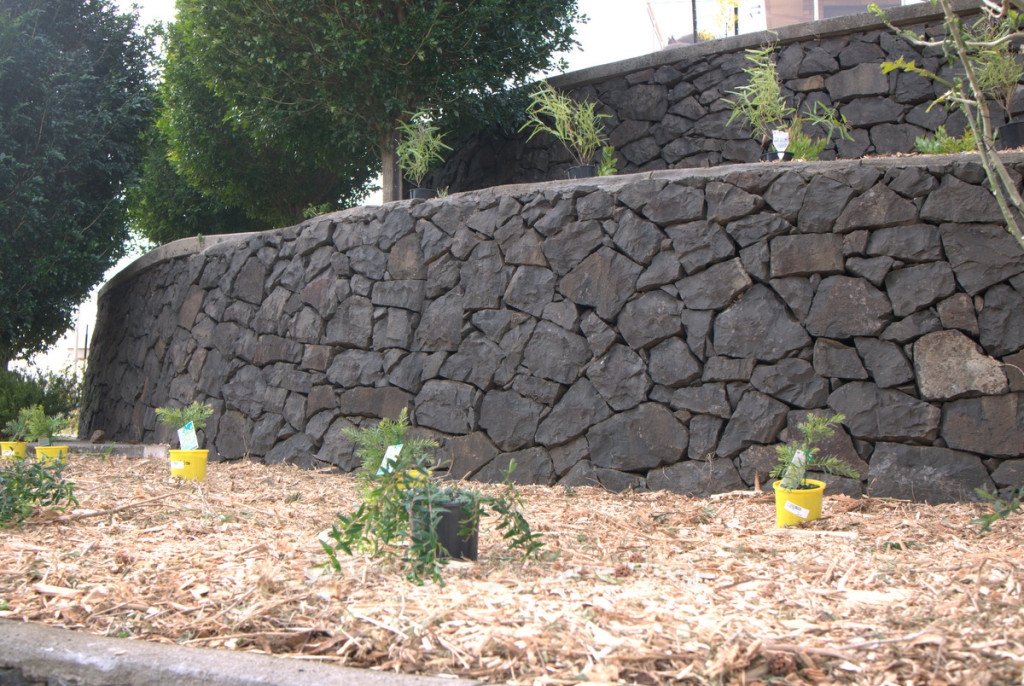
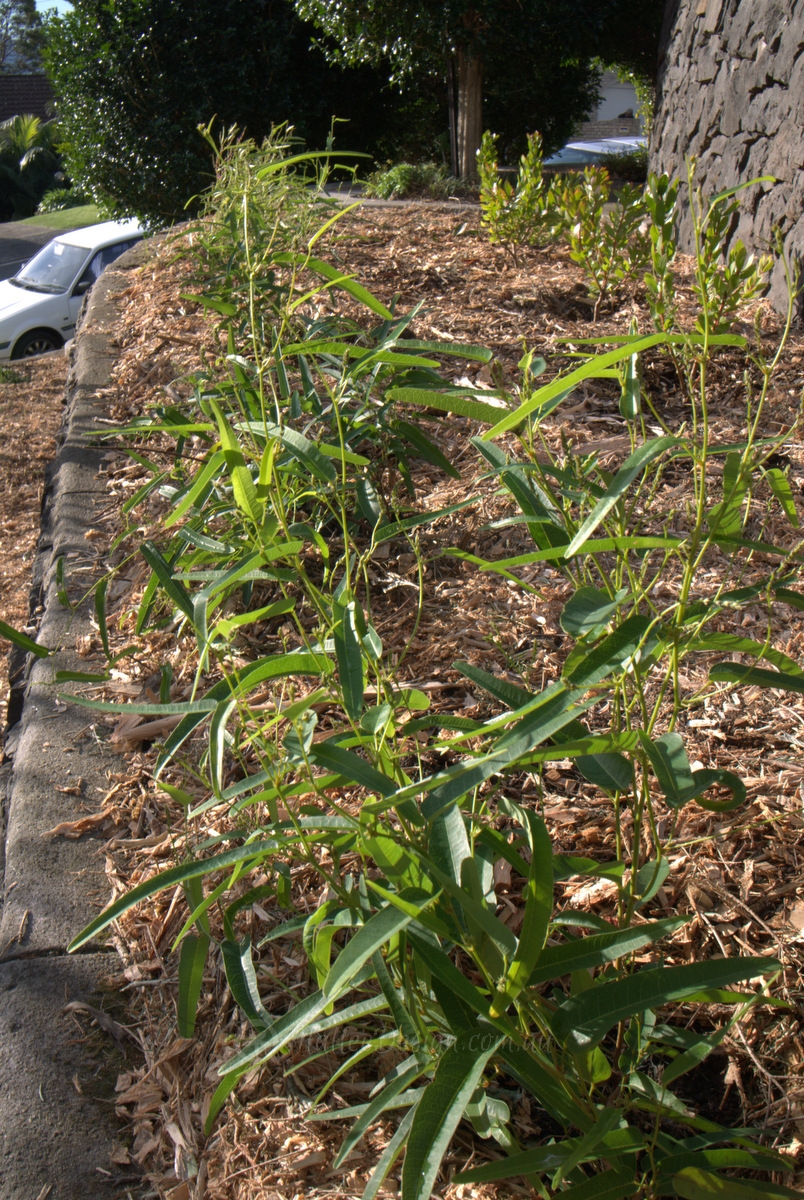
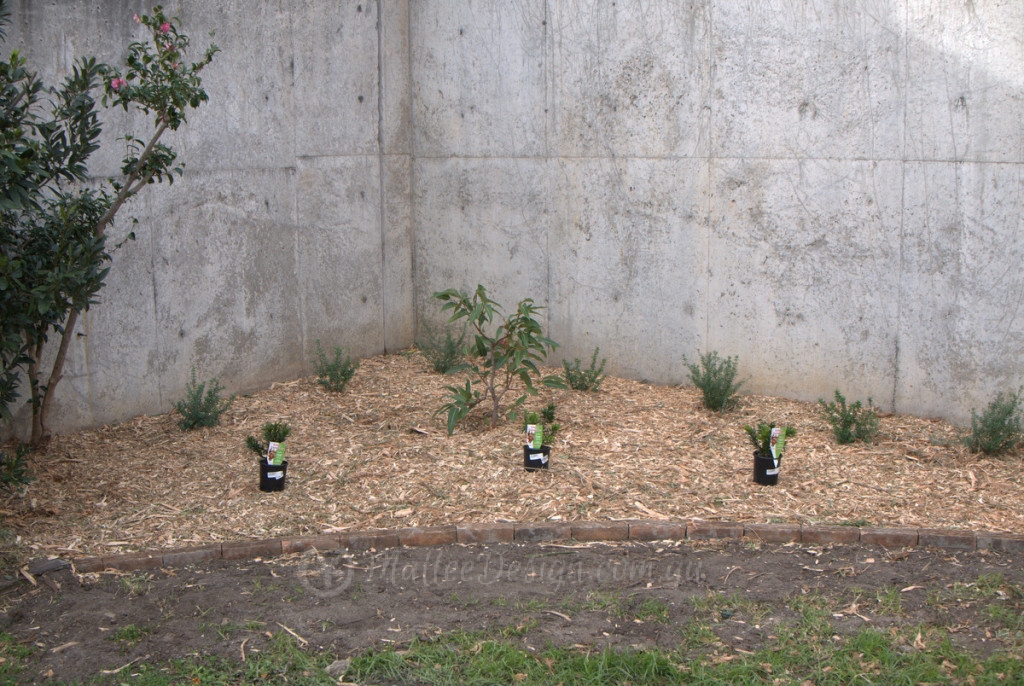
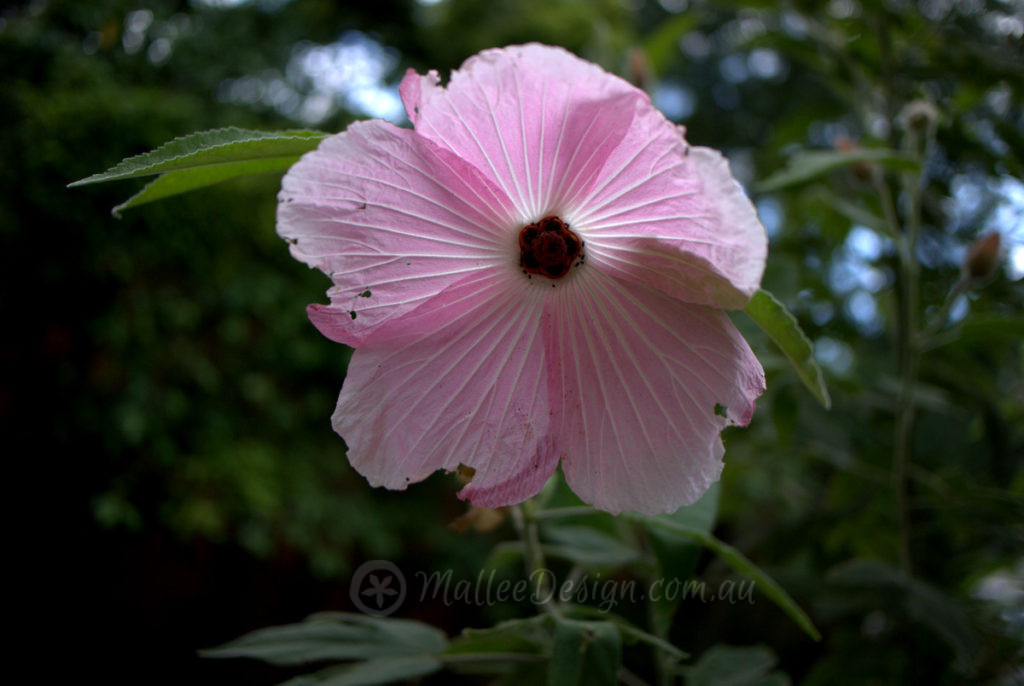
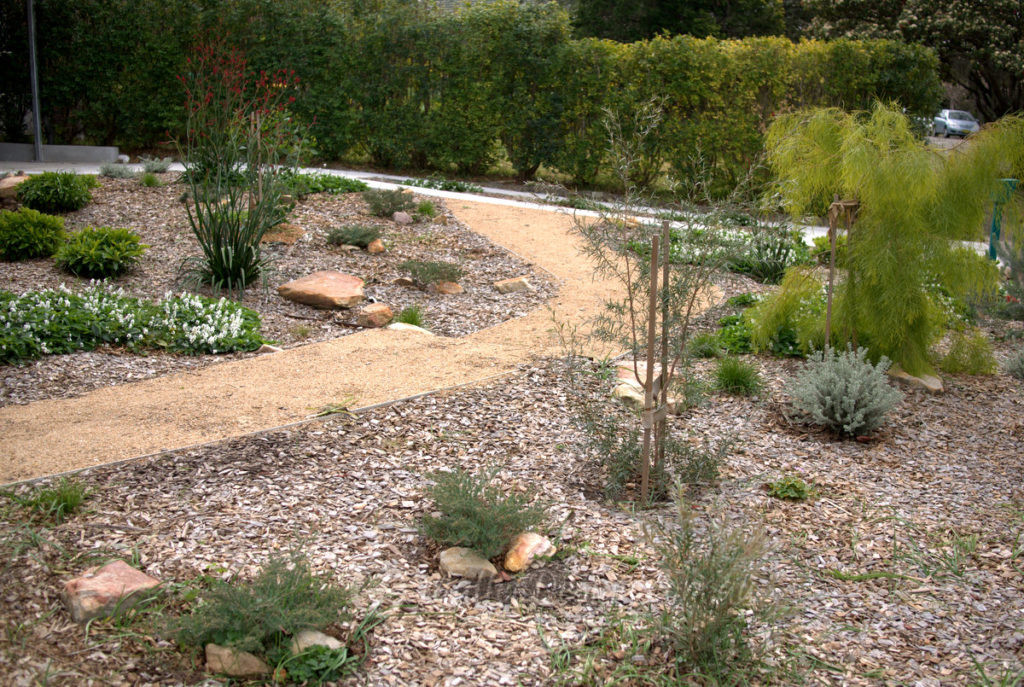
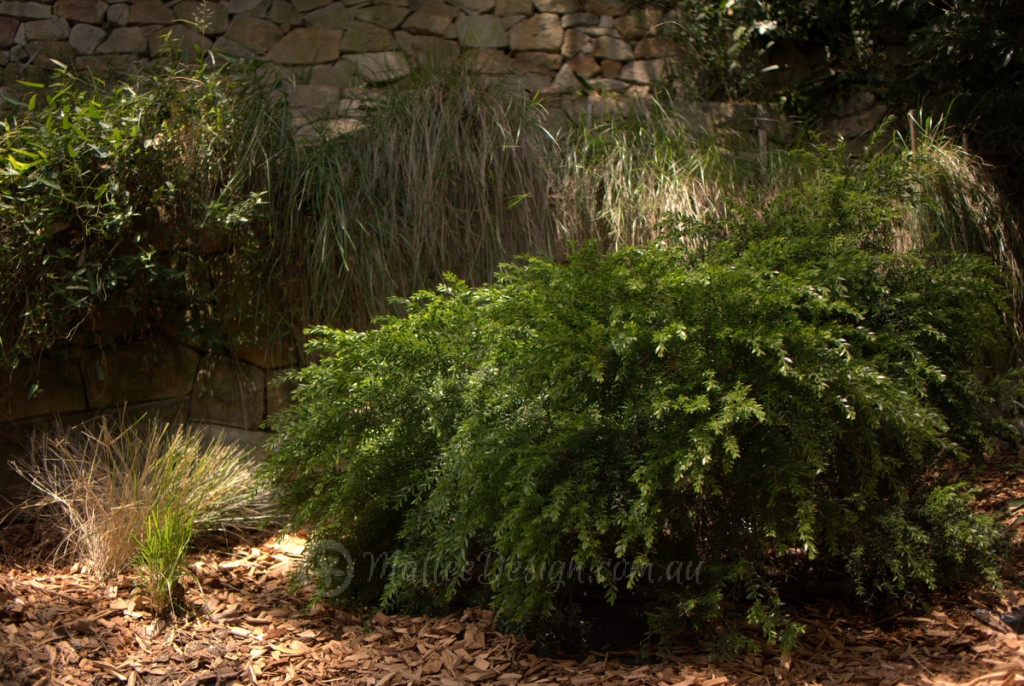
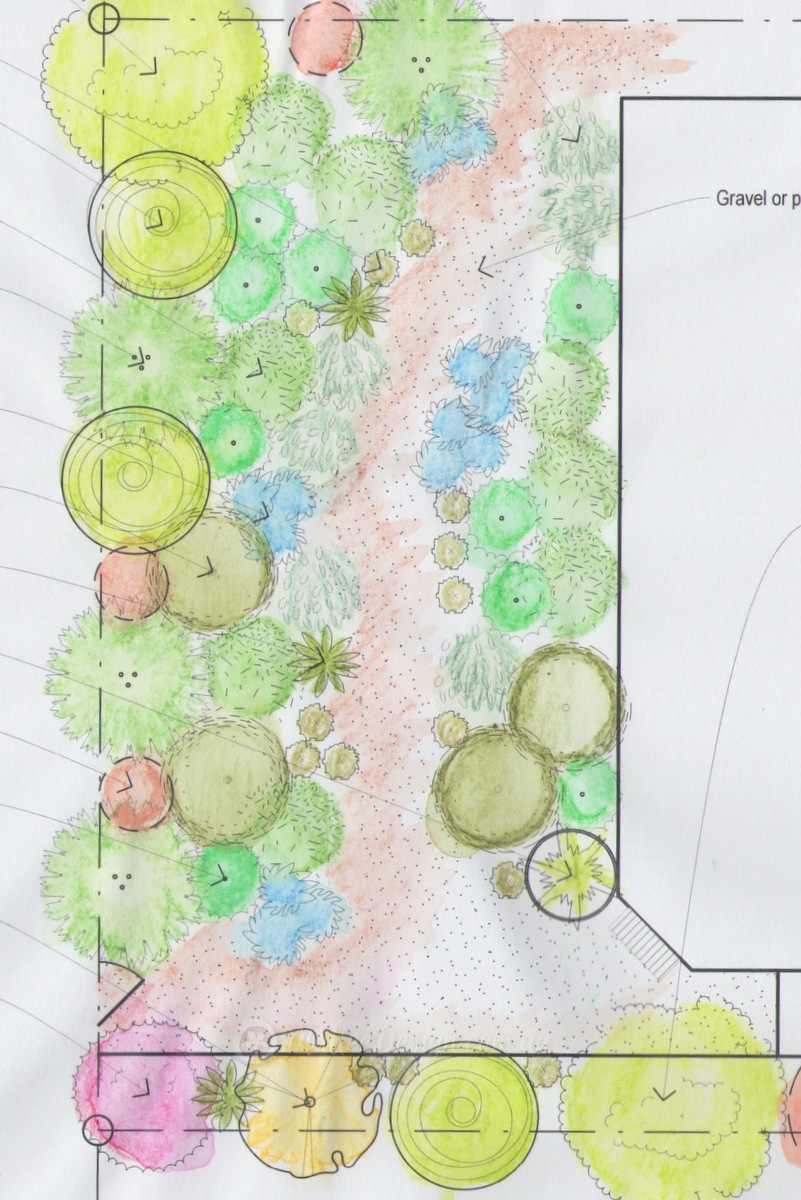
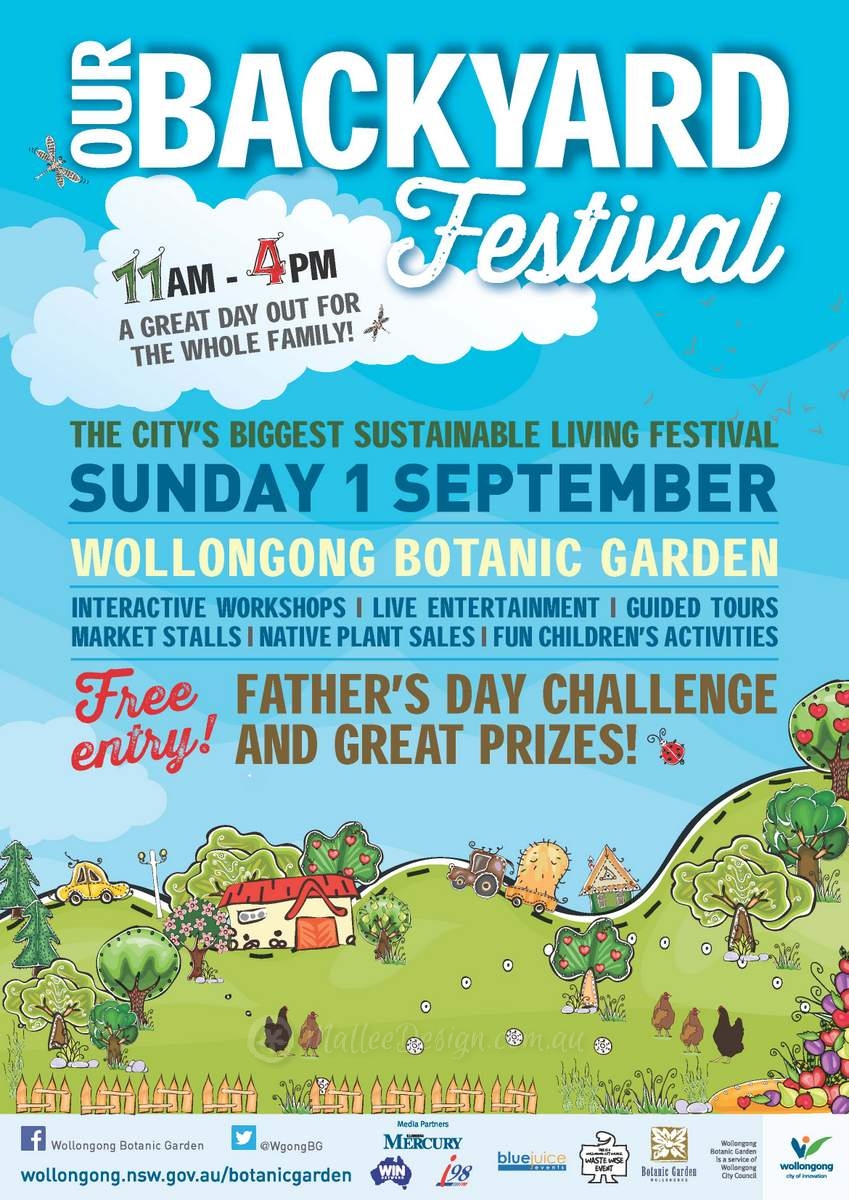
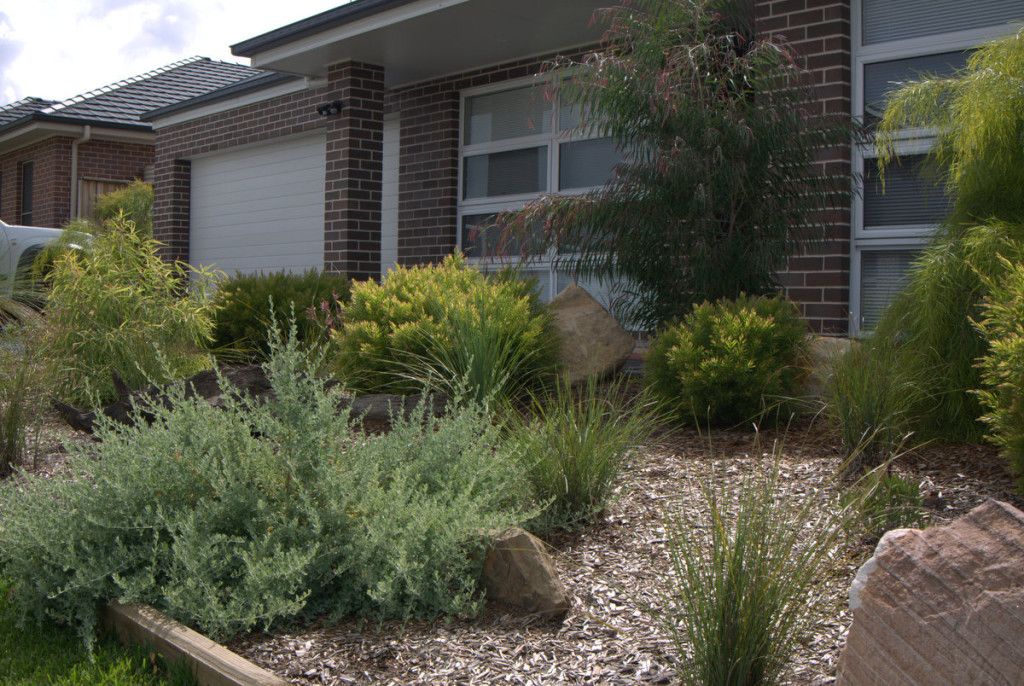
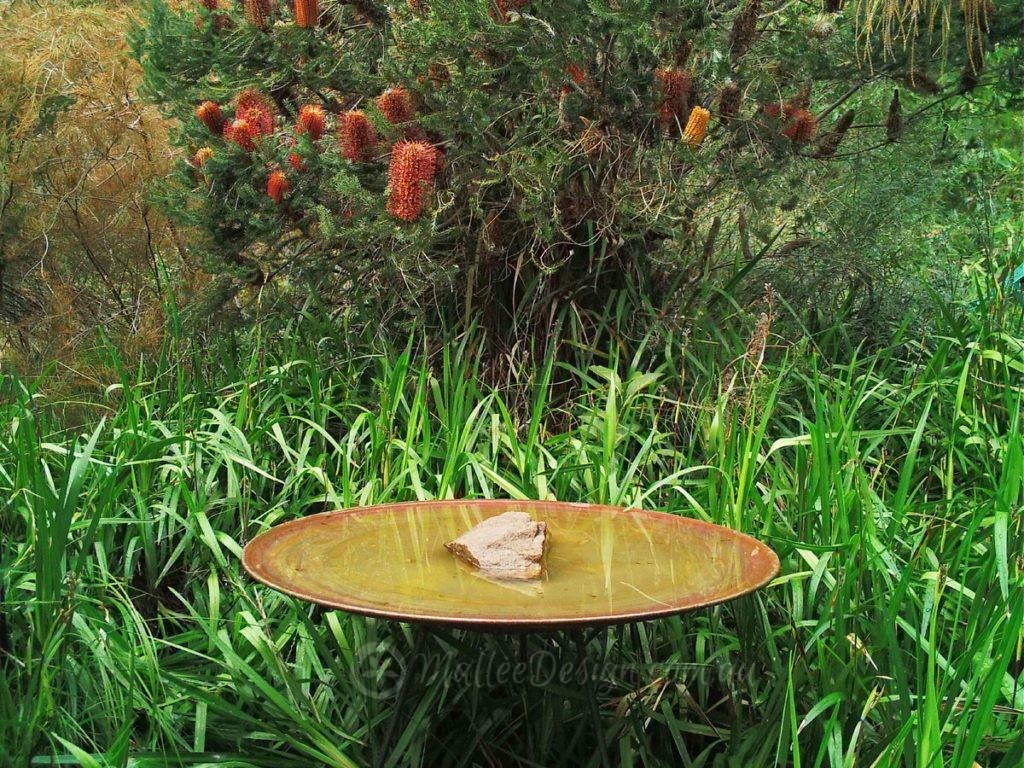
Leave a Reply